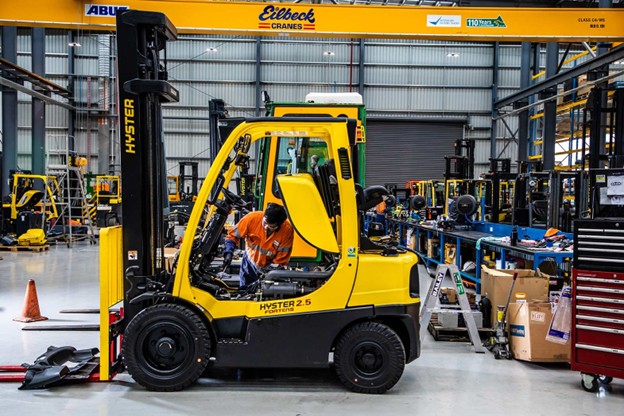How Should I Store My Forklift Long-Term
Whether your operations are winding down due to seasonal slowdowns, scheduled shutdowns, or unpredictable circumstances, it’s important to ensure your forklifts are stored properly when not in regular use.
Improper storage can lead to costly repairs, safety hazards, and operational delays when it’s time to get back to work. So, what’s the best way to store a forklift long-term?
Here are five essential steps to ensure your forklift remains in good condition and ready to return to service.
1. Start with a Full Clean
Before putting any forklift into long-term storage, a thorough clean is a must. Dirt, mud, and debris left on the unit can harden over time, potentially causing corrosion or impairing functionality when the forklift is brought back into use.
Cleaning your forklift now saves you time and money later by avoiding preventable damage and reducing the need for extra servicing before restarting operations.
2. Choose a Flat, Dry Storage Location
One of the most overlooked aspects of forklift storage is where it’s stored. The location should meet two key criteria:
- Flat – to prevent the risk of rolling or unintended movement.
- Dry – to protect the forklift from moisture damage.
Moisture can corrode components, compromise electrical systems, and lead to slipping hazards when the unit is reactivated. Keeping the forklift on a level, dry surface also protects your team, facility, and equipment from unnecessary risks.
3. Clean and Disconnect the Battery
Long-term storage is the perfect time to give your forklift’s battery some attention. Clean the battery terminals and casing thoroughly ideally every six months to remove any acid residue.
In addition, disconnect the battery to prevent slow electrical discharge or potential damage to components. This simple step helps preserve battery life and ensures the forklift is ready to power up when needed.

4. Carry Out Maintenance and Repairs While Idle
If your forklift won’t be used for an extended period, use the downtime to perform a comprehensive maintenance check. Key steps include:
- Lubricating all joints and moving parts
- Applying anti-corrosion grease to exposed areas
- Covering vulnerable sections against moisture intrusion
- Checking and adjusting tyre pressure
- Repairing any known issues or worn components
Completing these maintenance tasks now helps you avoid delays, improve reliability, and extend the life of your equipment.
5. Run the Forklift Weekly
Even in storage, your forklift should not sit completely idle. Start and run the unit at least once a week to keep mechanical and electrical systems in good working condition. This prevents rust build-up, seizing, and electrical issues caused by prolonged inactivity.
Think of it as a weekly health check to keep your machine ready to go the moment your operation resumes full speed.
Keep Your Forklifts Ready for What’s Next
So what’s the best way to store a forklift long-term?
It comes down to a proactive approach: clean thoroughly, store smartly, maintain regularly, and don’t let the unit sit idle for too long. These small steps now can save you significant time, money, and hassle down the track.
Need support with long-term forklift storage or servicing?
Our team of expert technicians can help ensure your fleet is kept in top condition whether it’s one unit or one hundred, call us on 13 22 54 or contact us today to book a service or request advice tailored to your equipment and operating environment.
